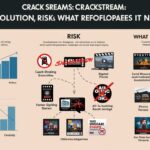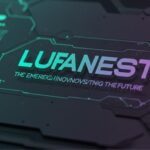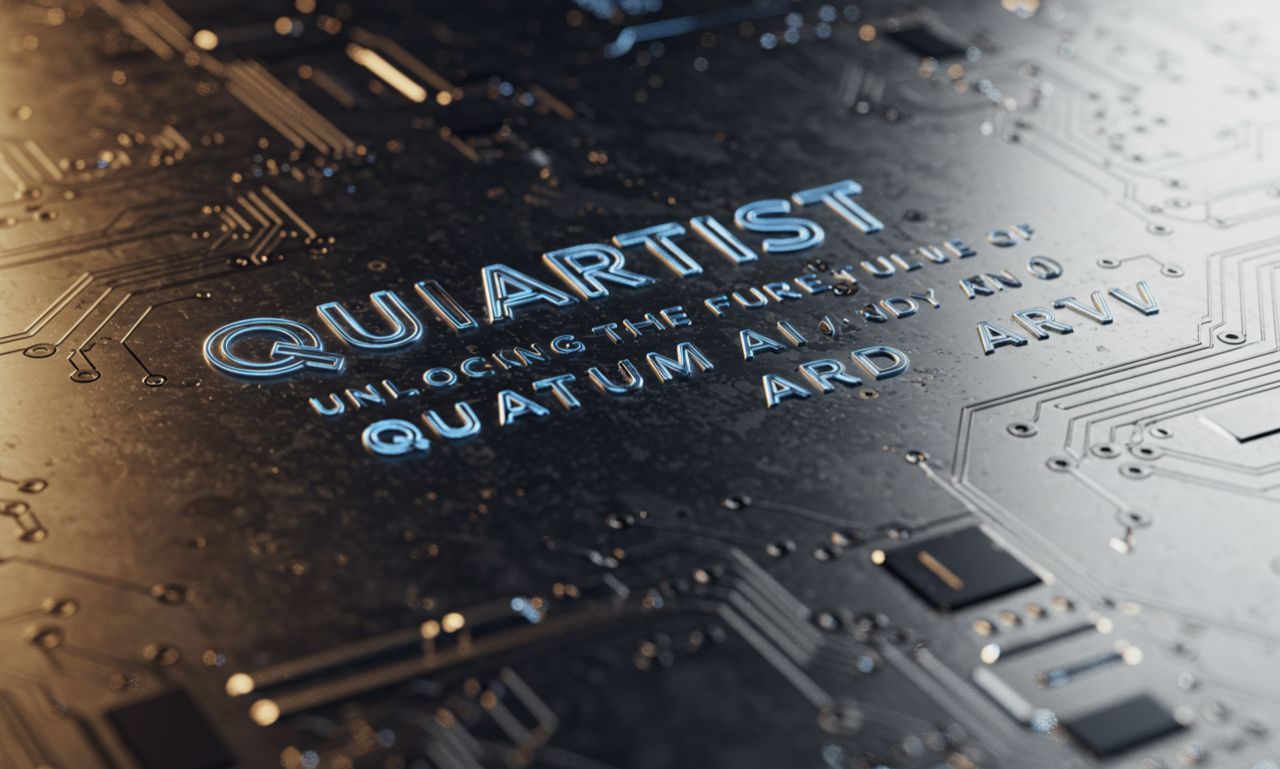In the evolving panorama of science and creativity, Quartist emerges as a striking confluence of quantum technology, artificial intelligence, and human imagination. Moreover, far from being a mere buzzword, Quartist represents a center, a philosophy, and a research ecosystem that not only unites disparate fields but also pushes the boundaries of what is possible. Consequently, in this article, we’ll explore what Quartist means, while also examining its history, outlining its goals, analyzing its structure, reviewing its achievements, and finally, considering its potential future.We’ll also consider criticisms and challenges, and reflect on the relevance of Quartist for research, industry, and creative domains.
What is Quartist?
The term Quartist refers to the “Quantum Artificial Intelligence for Science and Technology” international center based at Shanghai University. The center pursues interdisciplinary research spanning quantum computing, quantum simulation, quantum communication, quantum sensing, and quantum AI.
In another usage, “quartist” has also been proposed more metaphorically or philosophically: as a person who deliberately develops expertise in four interlinked disciplines, integrating them into synergistic value. Here, the “quart” suggests four, and “-ist” denotes the practitioner. That conceptual meaning overlaps somewhat with the mission of the Quartist center: combining multiple domains into unified frameworks.
Thus, Quartist sits at the nexus of two senses:
-
As an institutional research endeavor fostering quantum + AI + cross-disciplinary innovation.
-
As a conceptual model for creative and intellectual synthesis across multiple fields.
In the rest of this article, we’ll focus primarily on the institutional / scientific Quartist, while also noting the conceptual metaphor it inspires.
Historical Evolution of Quartist
The Quartist center was founded at Shanghai University to support cutting-edge quantum research with a multi-disciplinary flavor. Over time, it has positioned itself not merely as a physics or computer science group, but as a creative hub—connecting quantum technologies with bio-inspired ideas, neuromorphic computing, AI, and even aesthetic sensibilities.
Its name underscores this bridging: “Quantum Artificial Intelligence for Science and Technology” (QU + ARTIST). The “artist” portion signals that innovation is not just about brute force algorithms but about crafting systems, bridging intuition and logic, and exploring new forms of expression.
As the field of quantum technologies matured, Quartist broadened its scope. It now encompasses quantum communication, sensing, and simulation, in addition to quantum computation and quantum AI. Furthermore, it actively seeks bio-inspired and neuromorphic quantum ideas: e.g., taking cues from biological systems to design quantum architectures.
Quartist promotes a culture of integration: linking scientific insights with engineering practices, artistic perspectives, and business or societal impact. ver time, this ambition has drawn collaborators across disciplines, encouraging more creative, hybrid approaches.
Mission and Vision of Quartist
Mission
-
Advance fundamental and applied research in quantum technologies: computing, communication, simulation, sensing, and AI.
-
Foster bio-inspired and neuromorphic quantum information ideas.
-
Bridge science, engineering, art, and business: to ensure that quantum innovations are not only powerful, but also meaningful, usable, and impactful.
Vision
Quartist envisions a future where quantum technologies become seamlessly embedded into society, art, and technology infrastructures. It seeks a world where quantum AI systems are not black-boxes, but expressive, interpretable, and integrated with human values. It imagines cross-disciplinary ecosystems in which artists, engineers, scientists, and entrepreneurs co-create new forms of technological art and quantum-enhanced systems.
Core Values
-
Pragmatic aesthetic: Innovation should be not merely technically advanced, but also elegant, coherent, and meaningful.
-
Interdisciplinarity: No domain should stand alone; breakthroughs often lie in the overlaps.
-
Creativity + rigor: Marrying rigorous scientific methods with bold creative leaps.
-
Impact orientation: Research should aim toward beneficial societal, industrial, or cultural outcomes.
-
Collaboration and openness: Encouraging outreach, partnerships, and open exchange across boundaries.
Research Domains in Quartist
Quartist’s research spans multiple, interlocking domains. Some of the prominent ones are:
Quartist and Quantum Computing
Designing new quantum algorithms, error correction techniques, and architectures. Exploring how to harness quantum parallelism, hybrid quantum-classical schemes, and domain-specific algorithms.
Quantum Simulation
Using quantum systems (or simulators) to model physical, chemical, or biological systems that are classically intractable.
Quantum Communication & Networking
Secure quantum key distribution, quantum repeaters, entanglement distribution, and quantum internet protocols.
Quantum Sensing & Metrology
Designing sensors that exploit quantum coherence or entanglement to exceed classical limits in precision measurement.
Quantum Artificial Intelligence / Quantum Machine Learning (QML)
Developing AI methods adapted to quantum spaces, hybrid models, and leveraging quantum advantage for learning tasks.
Bio-inspired & Neuromorphic Quantum Ideas
Drawing from biological systems (e.g. neural networks, brain architectures) to inspire quantum architectures or information processing schemes.
Applications & Industry Interfaces
Applying quantum methods to domains such as materials science, optimization, cryptography, finance, and more.
Artistic and Aesthetic Explorations
Experimenting with quantum art, visualizations, sonifications, or interactive quantum experiences, thus giving expression to quantum concepts.
Notable Achievements & Outputs
Quartist has contributed to multiple publications and projects:
-
Work on spin-boson models as simulators of non-Markovian environments.
-
Research on secure quantum remote state preparation and related cryptographic primitives.
-
Studies on ultrastrong coupling regimes in light-matter interactions.
In addition to scientific papers, Quartist has organized competitions, hackathons, and outreach events to engage a broader community—for example, a Huawei quantum computing hackathon.
Quartist’s role as a bridge between art and science means some of its outputs are more speculative, aesthetic, and experimental—such as visual or interactive quantum art prototypes.
Organizational Structure & Collaborations
Quartist is based in the Physics Department at Shanghai University. It partners with other universities, research institutes, industry, and funding bodies across China and internationally.
It draws talent from physics, computer science, engineering, systems theory, AI, art, and beyond. The project ethos encourages co-supervision, joint appointments, and cross-disciplinary teams.
Funding may come from government grants, research councils, industry collaborations, and innovation programs, though explicit public details are limited.
Why Quartist Matters: Significance & Impact
Scientific & Technological Value
Quantum technologies are expected to reshape computing, cryptography, sensing, and materials science. Quartist contributes by pursuing cutting edge theory, algorithms, and architectures. Its encouragement of bio-inspired and neuromorphic quantum ideas may open new paradigms beyond standard gate models.
Interdisciplinary & Cultural Value
By combining art with science, Quartist helps humanize quantum research, making it more accessible, expressive, and meaningful. It challenges the polarization between technical and artistic cultures, enabling creative forms of representation, outreach, and education.
Innovation & Industry Translation
Quartist’s orientation toward applications and interfaces with business helps bridge the “valley of death” between research and deployment. Its collaborations could lead to quantum startup spin-offs, technology transfers, or domain-specific solutions.
Educational & Outreach Value
Quartist can inspire students and the public. By translating abstract quantum ideas into artful or intuitive forms, it helps spread understanding. Its events, exhibitions, and projects may demystify otherwise opaque fields.
Challenges & Criticisms
No ambitious project is without hurdles. Some challenges and criticisms that Quartist must navigate include:
- First and foremost, the complexity barrier remains a challenge. Quantum AI and quantum technologies are highly technical, with steep learning curves. As a result, translating them into artistic or accessible forms becomes inherently difficult.
- In addition, integration tensions arise when combining art and science. Such blending risks diluting rigor in science or reducing coherence in art. Therefore, ensuring both sides maintain integrity is nontrivial.
- Moreover, resource constraints cannot be ignored. High-end quantum experiments, infrastructure, and talent are extremely costly. Consequently, funding, equipment, and recruitment continue to present ongoing challenges.
- Finally, there is the risk of overhyping. The “quantum + AI + art” narrative might easily attract attention and exaggeration. Thus, managing expectations is essential to preserve long-term credibility.
-
Measurable impact: It may be harder to quantify outcomes in the aesthetic or integrative dimension compared to raw metrics like algorithm performance or publication counts.
-
Cultural divides: Bridging academic cultures (physics, engineering, arts) may provoke friction: differing languages, norms, and evaluation criteria.
Nevertheless, acknowledging these risks is part of Quartist’s strength: its very ethos is about tackling bold frontiers; navigating those challenges is the path to genuine innovation.
How to Engage with Quartist
If you are a researcher, artist, student, or stakeholder interested in Quartist, here are possible entry points:
- To begin with, join collaboration calls for proposals or joint projects.
- In addition, attend hackathons, workshops, or quantum innovation events.
- Furthermore, propose artistic–quantum projects that blend art with quantum systems.
- At the same time, apply for internships or visiting scholar roles.
- Moreover, use Quartist outputs—such as papers, art, and visualizations—in teaching.
- Finally, collaborate on cross-disciplinary publications to expand knowledge sharing.
Future Prospects of Quartist
Where might Quartist evolve in coming years?
-
Quantum × immersive art (VR/AR/Metaverse): Artistic installations in virtual or augmented quantum spaces.
-
Generative quantum art: Using quantum randomness and superposition to drive generative aesthetic systems.
-
Explainable quantum AI: Creating transparent, interpretable quantum models that also have aesthetic presentations.
-
Quantum creative networks: Platforms where artists and scientists co-create in quantum spaces.
-
Domain-specific quantum tools: Tailored quantum methods for biology, neuroscience, and materials science.
-
Cross-cultural outreach: Linking global quantum art communities.
-
Educational quantum art curricula: Teaching quantum science through creative experiments.
As quantum hardware improves and adoption grows, Quartist may become more central to how we experience technology—not just through utility, but through expressive, humanistic forms.
Conclusion
Quartist represents a daring step into the future, where science, technology, and creativity no longer live in separate silos but flow together as one.By merging quantum research with artificial intelligence, as well as integrating neuromorphic ideas and even artistic inspiration, Quartist ultimately demonstrates that innovation not only thrives at the crossroads of disciplines but also expands possibilities for future breakthroughs. Its achievements in quantum algorithms, communication, and simulation highlight the strength of rigorous science, while its artistic and aesthetic explorations showcase the importance of imagination and human-centered design.











